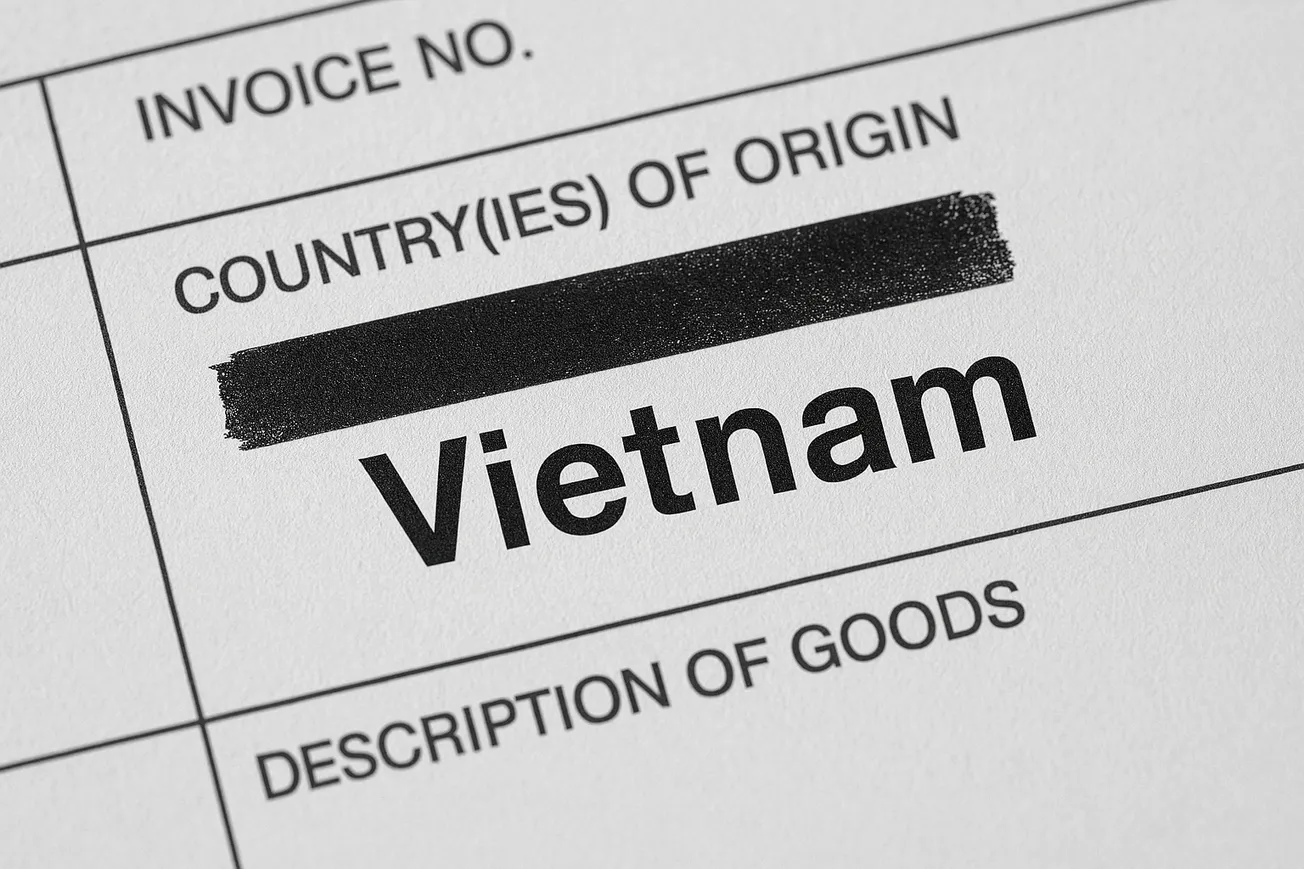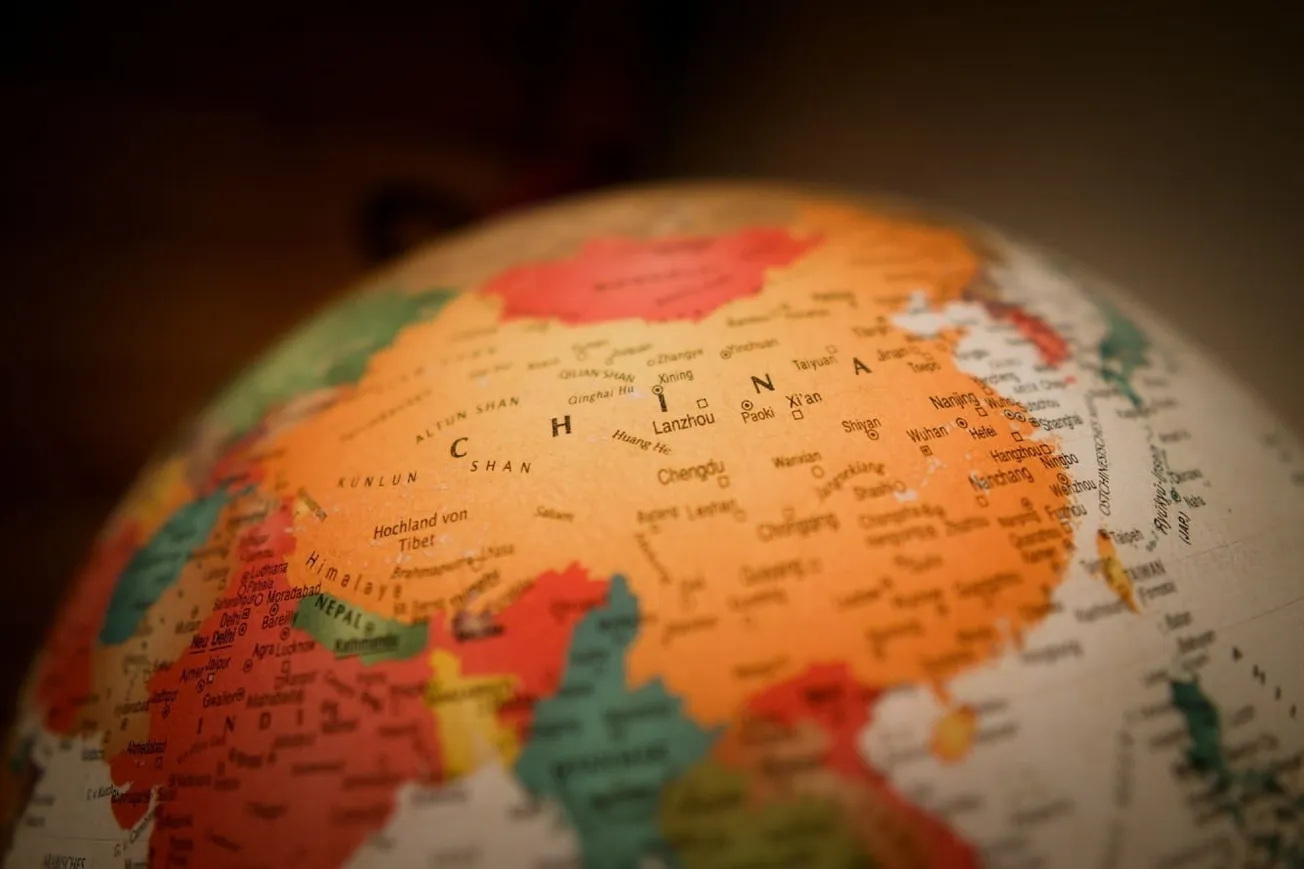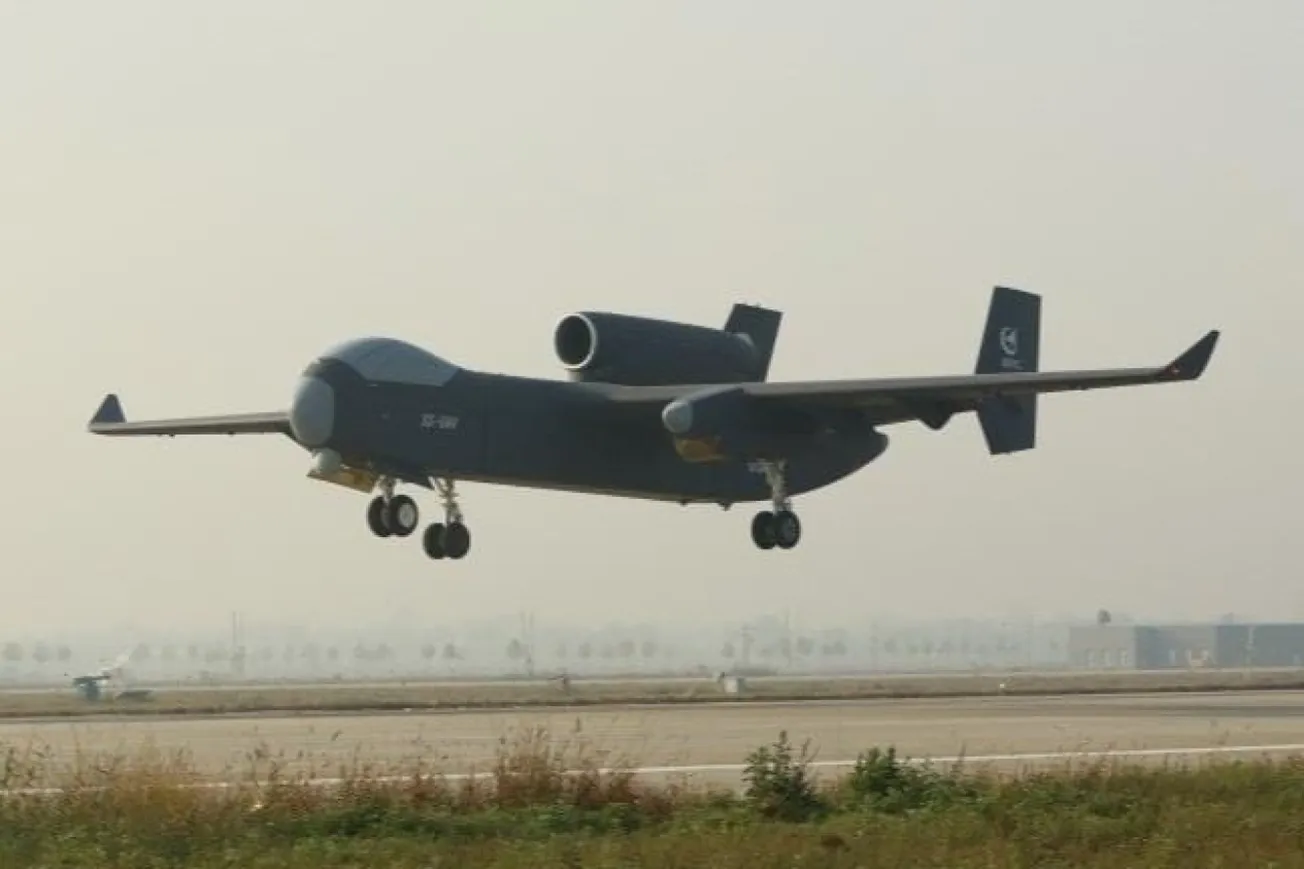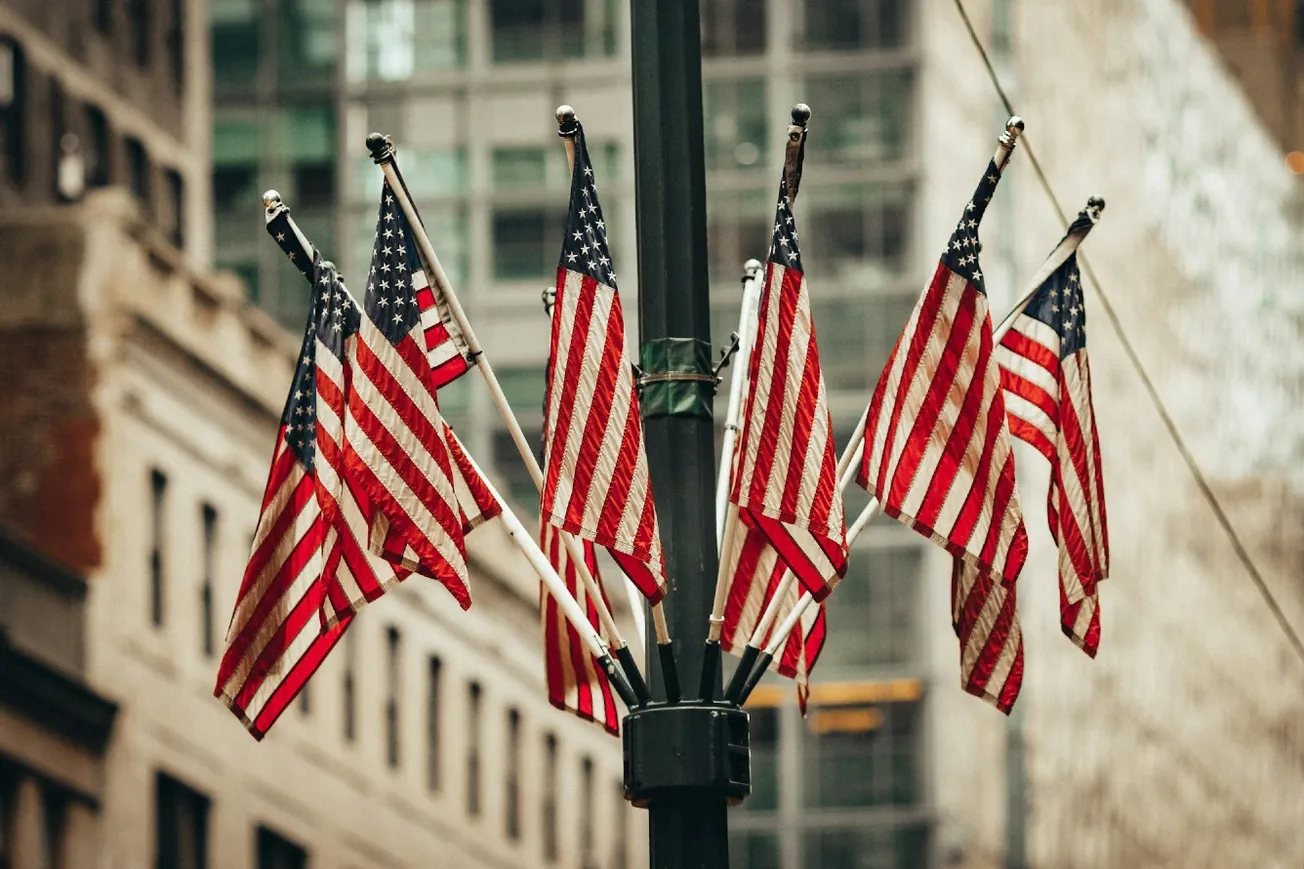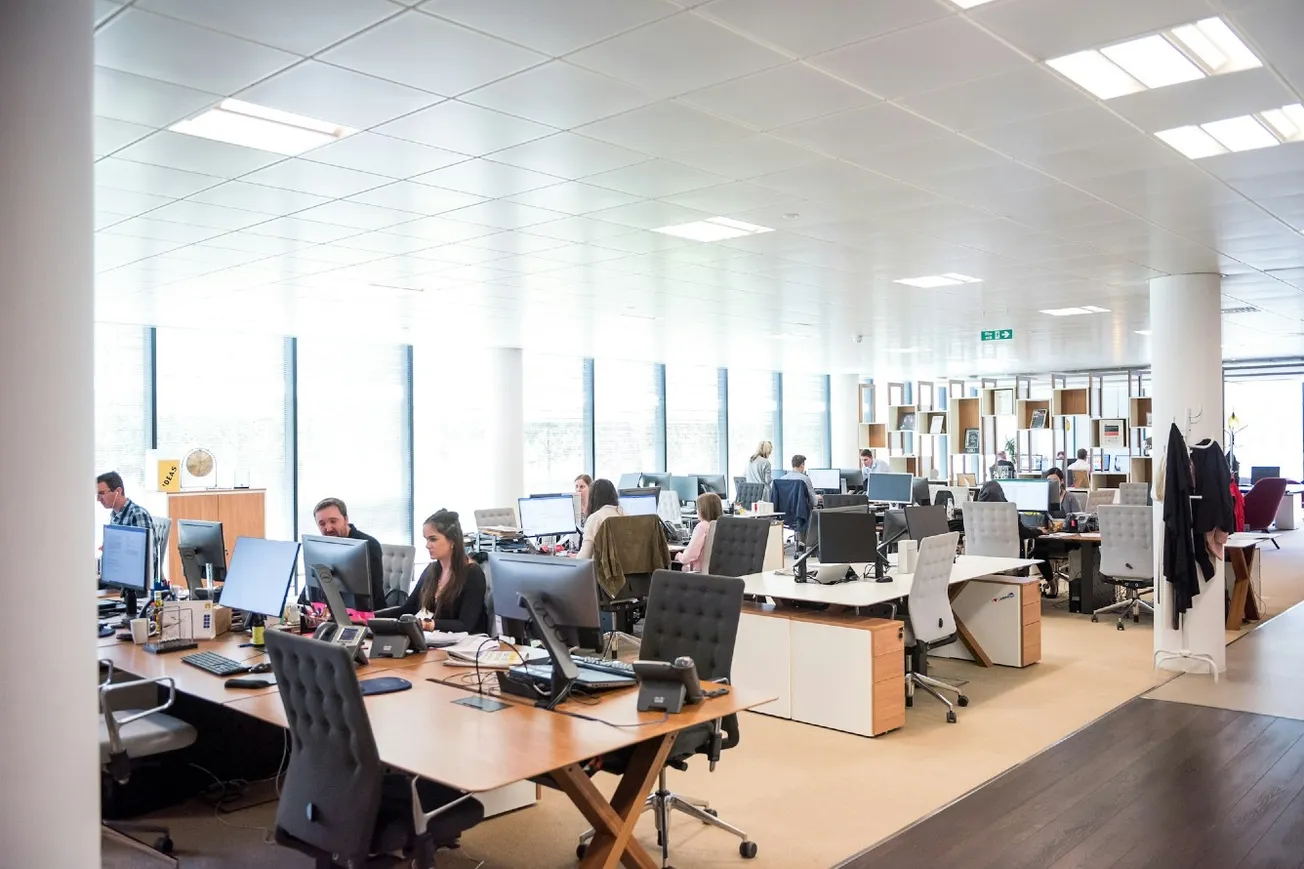Chinese President Xi Jinping is on a diplomatic charm offensive and is visiting Vietnam this week to discuss navigating U.S. tariffs. On Monday, China and Vietnam signed dozens of cooperation agreements to strengthen ties on trade and supply chains between the two nations.
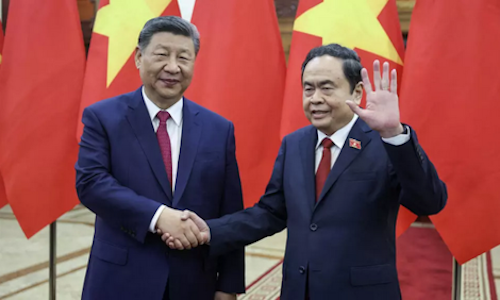
When asked about the talks, President Trump shrugged it off:
I don’t blame China. I don’t blame Vietnam. They’re trying to figure out how do we screw the United States of America.
It wasn’t just rhetoric. New research from Harvard Business School, Duke University, and the University of Nottingham shows Trump may have had a point. Using detailed shipping records, the study reveals that Chinese goods worth billions of dollars were quietly rerouted through Vietnam to dodge U.S. tariffs.
To uncover the scheme, the researchers followed the paperwork. They matched what China sent into Vietnam with what Vietnam shipped out to the U.S.—same products, matching timelines, and often the same firms. We’re talking electronics, furniture, industrial gear—items hit hardest by Trump’s tariffs. If a product was sent from China to Vietnam and a nearly identical one shipped to America in the same quarter, odds are the product is the same. Just the label changed.
According to the researchers, Chinese exporters found a simple way to sidestep the 2018 tariffs: ship the goods to Vietnam, make minimal changes—if any—and slap on a “Made in Vietnam” label. From there, the products were sent to the United States tariff-free. It was a workaround disguised as trade.
And the numbers tell the story. U.S. Census Bureau data shows Vietnam’s trade surplus with the U.S. surged from $39.5 billion in 2018 to roughly $123.5 billion in 2024—an average annual growth of 21.7%. By 2021, rerouted goods accounted for somewhere between 16% and 42% of Vietnam’s exports to the U.S.—between $15 and $40 billion worth of goods that may have originated in China.
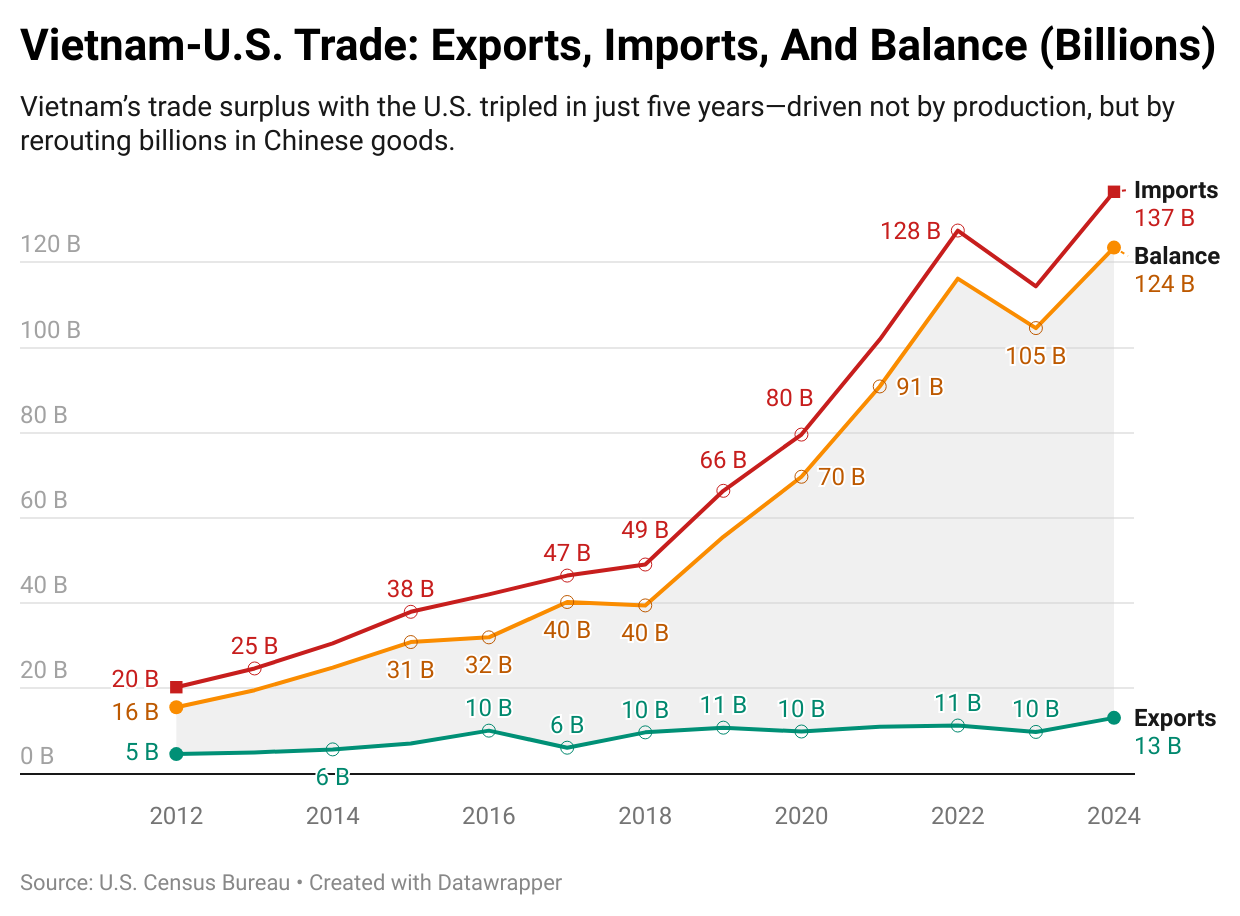
Furthermore, the Harvard-Duke-Nottingham study found that most of the rerouting came from firms set up after the tariffs took effect, many of them Chinese-owned. These weren’t major industrial investments creating jobs or building factories. They were shell companies, often little more than forwarding stations, designed to funnel Chinese goods through Vietnam with just enough paperwork to pass inspection. As expected, these firms had few employees and sky-high “productivity” figures, not because they were efficient, but because their job was simply to move boxes and slap on a new label. The study found these firms generated $6,000 more in exports and $18,000 more in revenue per worker than typical exporters—not due to innovation or efficiency, but because they weren’t actually making anything.
Edmund Malesky, a Duke University professor of political science and one of the authors of the Harvard paper, estimates that 84% of Vietnam’s increase in manufacturing activity was value-added production. “But there’s a smaller part, maybe 16%, depending on how you measure it, which is rerouting, which became a concern for the United States,” Malesky said.
So what?
The real lesson? Nations will go to great lengths to duck tariffs—and the U.S. still hasn’t figured out how to stop them. Without strict rules-of-origin checks and serious consequences for transshipment, companies will always find ways to game the system. In this case, China didn’t fight the tariffs—it worked around them.
On paper, Vietnam looked like a big winner. Exports soared, and foreign investment spiked. But underneath the numbers, a different story was playing out. Many of the new “exporters” were not factories employing workers but glorified shipping intermediaries. As the Harvard-Duke study notes, these firms relied less on labor and more on pass-through material, raising revenue and profits in Vietnam but contributing little to its real economy.
If the U.S. wants an effective trade policy, enforcement must be part of the equation. As the Harvard-Duke study makes clear, we can’t trust the label alone. The government must also hold U.S. importers accountable—because they often know exactly what’s inside the box and where it really came from.
Trump wasn’t just being dramatic. He was describing a system where the game is rigged with a shipping label and a shipping lane—and America keeps letting it happen.

